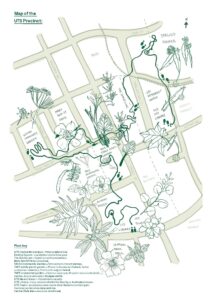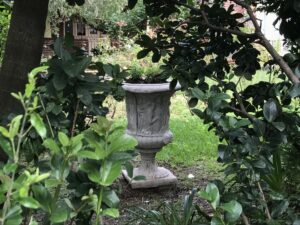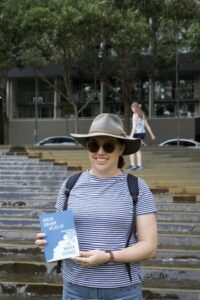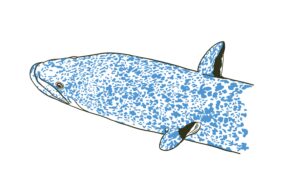Reposted from ‘COMPOSTING Feminisms and Environmental Humanities’, a reading group of cross-institutional, cross-disciplinary scholars exploring the traces and legacies of inclusive feminisms within the broad Environmental Humanities, and forging new linkages between the two fields.
Tuesday 8 August, 4-5:30 | Facilitated by Abby Mellick Lopes & Ali Crosby | Readings: Ingold (2004) ‘Culture on the Ground: The World Perceived Through the Feet’ and Solnit (2001) ‘Rising and Falling: The Theorists of Bipedalism’
This session will consider walking as a special kind of knowledge-creating practice. For starters, walking involves the whole body, all of the senses, orientation, care and depending on the state of the path – an ability to let your mind wander. Walking involves a routine – one foot in front of another, but also the flow of a changing environment where objects unfold, ‘explode and mutate’ (Knorr-Cetina 2011, p.191). Walking as a critical practice is something we did as children – we used to commit to a bee-line regardless of fences, swimming pools, lantana and territorial dogs…. or shadow someone at a safe distance until they disappeared.
In addition to our regular reading, talking and tea drinking, we will also go for a walk. Please wear shoes that are comfortable for you to walk in and bring wet weather gear, if it looks like it will be needed.
LOCATION: We will meet on the University of Sydney campus, a precise location TBD.
REQUIRED READING:
Ingold, T 2004, Culture on the ground: the world perceived through the feet. Journal of Material Culture, 9(3): 315-340.
Solnit, R 2001, Rising and Falling: The Theorists of Bipedalism, in R. Solnit’s Wanderlust: A history of walking. Penguin, pp. 30-45.
TIME PRESSED:
Ingold, T 2004, Culture on the ground: the world perceived through the feet. Journal of Material Culture, 9(3): 315-340 [the highlighted sections]
OPTIONAL READING:
Solnit, R 2001, ‘Walking After Midnight: Women, Sex, and Public Space’ in R Solnit’s Wanderlust: A history of walking. Penguin, p.232-239.
Debord, G. 1956 [1958] Theory of the dérive. Available online: http://www.cddc.vt.edu/sionline/si/theory.html
Ingold, T 2010, ‘Ways of mind-walking: Reading, writing, painting.’ Visual Studies, 25(1): 15-23.
Knorr-Cetina, K. 2001, ‘Objectual Practice’ in Schatzki, T., Knorr Cetina, K. and Von Savigny, E. The Practice Turn in Contemporary Theory. London, Routledge, pp. 184-197. Available online: https://conceptsinsts.wikispaces.com/file/view/PracticeTurnInContemporaryTheory.pdf
Walking lab: http://walkinglab.org/author/mapping-edges/
Walking artists’ network: http://www.walkingartistsnetwork.org/
Heddon, D. and M. Myers 2017, The walking library: mobilising books, places, readers and reading. Performance Research, 22(1): 32-48.







0 Comments